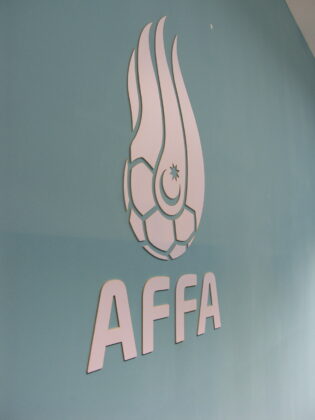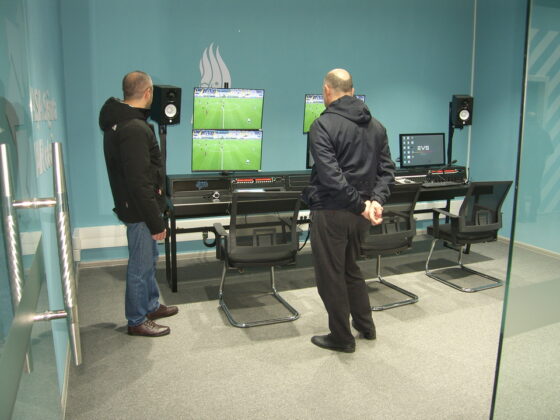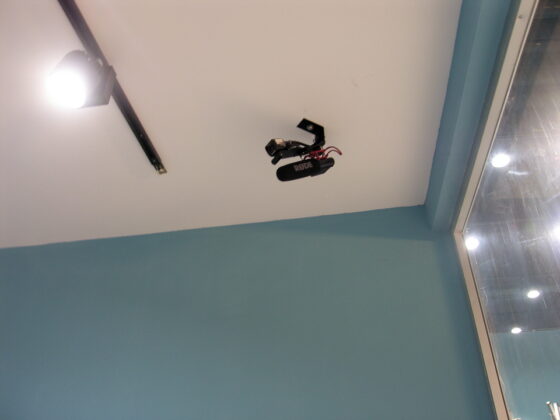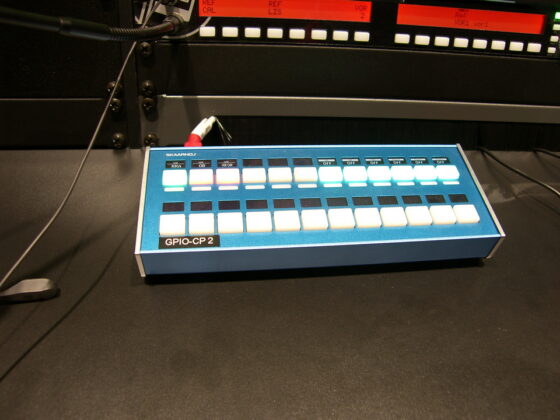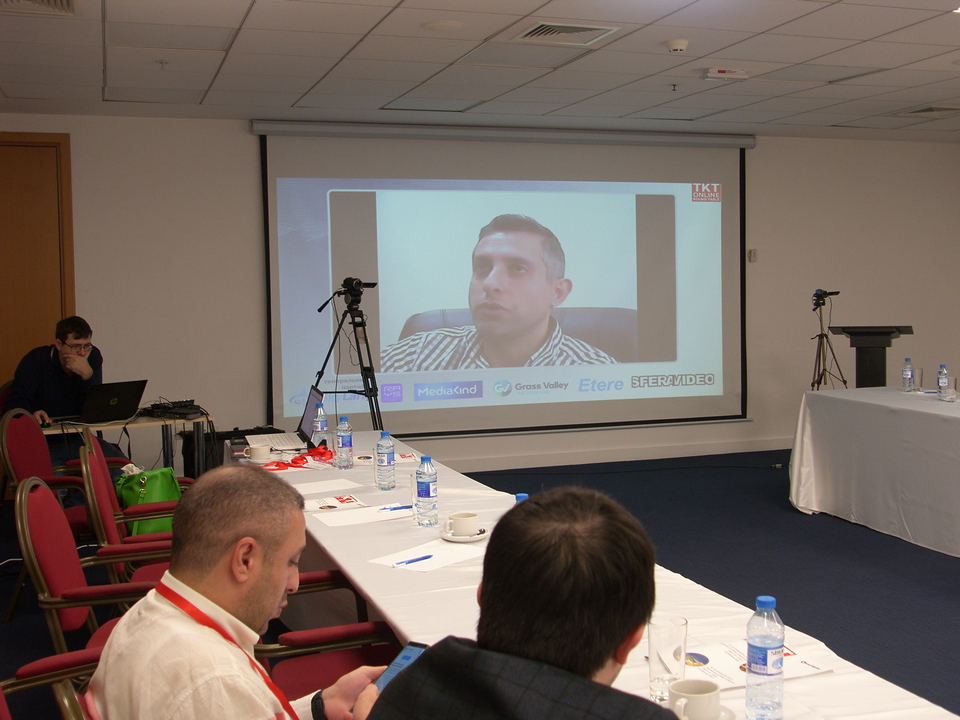
The Broadcasting Cinema Pro AV 2022 Azerbaijan International Conference held a round table with the theme “Remote Production and VAR in Sports”.
The round table raised the issues of production and signal transmission in live broadcasts, the use of VAR in various sports, as well as ways to monetize technologies associated with remote production.
The international conference Broadcasting Cinema Pro AV 2022 Azerbaijan took place on November 22-23, 2022 in Baku, Azerbaijan.
The AFFA VAR project coordinator in Azerbaijan, Farida Lutfaliyeva stated in her introduction “I represent the Football Federation of Azerbaijan and I am the coordinator of the VAR (Video Assistant Referee) project in Azerbaijan.”

“In 2022, FIFA officially confirmed the possibility of using VAR at the 2022/23 Premier League games in Azerbaijan. Work on the project lasted a year and a half. At the request of FIFA, we submitted a project plan for the use of the VAR platform in advance and named the expected deadlines for its completion.
At the preparation stage, the VAR project was headed by Elkhan Samedov who I worked for as his assistant. At the moment, Elkhan Samedov is the president of the PFL (Professional Football League) of Azerbaijan, and I am tasked with coordinating the VAR, representing the football federation of our country.”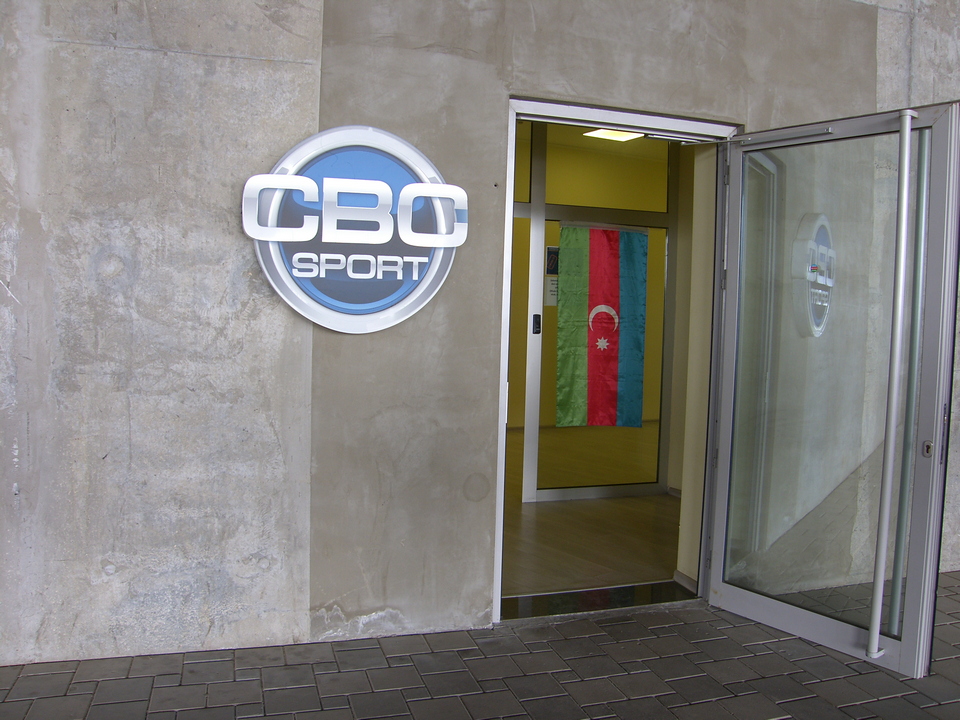
The preparation included several stages:
- Mandatory certification of judges and operators, as well as testing of stadiums where VAR will take place.
- The communications and signal strength of the broadcasts through the VAR center of the stadium and back was checked.
- To prepare all stages, VAR instructors, employees of the referee committee, as well as employees of the legal and financial departments of the federation were involved.
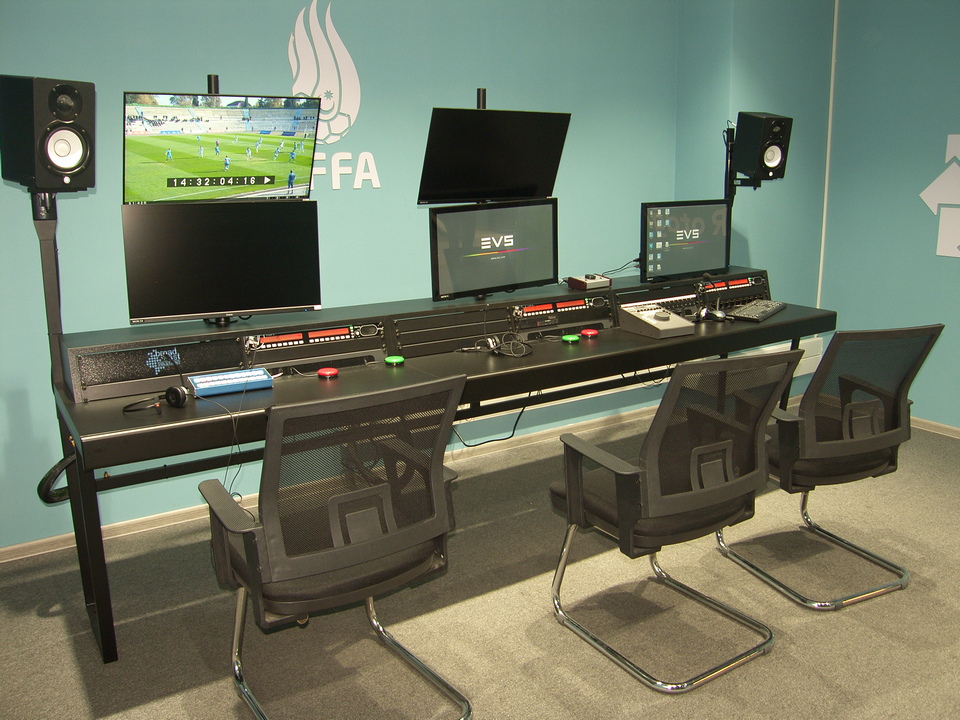
Currently, VAR technology is used in Premier League games, as well as in the Azerbaijan Football Cup.
Farida continues, “In our country, the VAR project is carried out as follows. We placed the VAR-center on the territory of the Olympic Stadium in Baku. Those games that take place only in Baku and Sumgayit are played through the VAR-center. And the games taking place in the regions of Gabala, Tovuz, Ganja, Shamakhi, use a specially equipped machine equipped with monitors that allow referees and operators to monitor the progress of the game”.
The VAR Center at the Olympic Stadium in Baku serves as the central VAR hub for all Azerbaijan Football League games in question. Therefore, most of the facilities are connected to the Olympic Stadium via a dedicated fiber optic connection. Three VAR rooms provide enough space for three video referees. Technically, they have access to a separate central control room (CAR) with the ability to simultaneously cover three matches. Each VAR system, mobile and fixed, is capable of processing up to eight video signals per match.”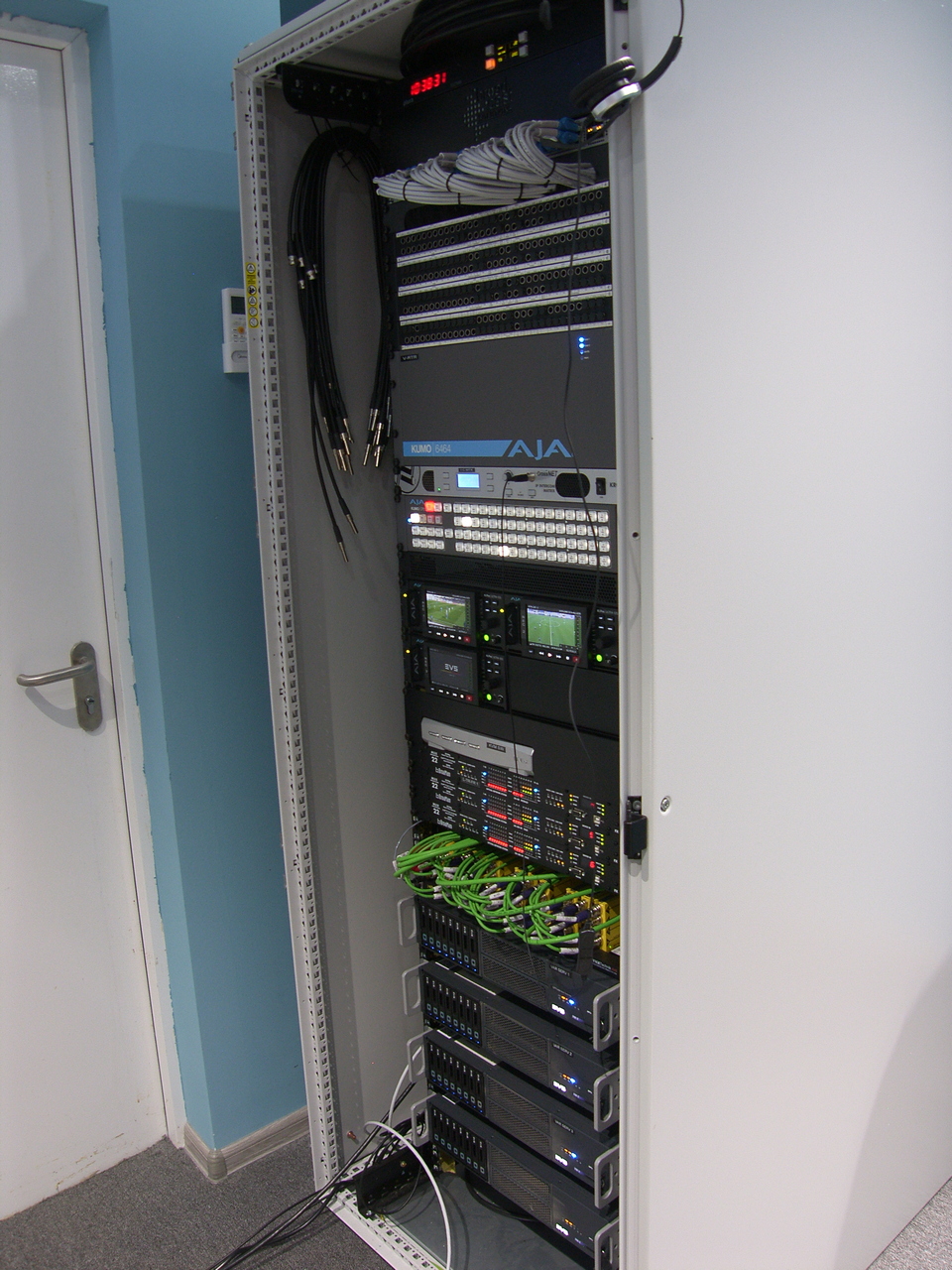
AFFA and Broadcast Solutions have jointly selected the EVS Xeebra multi-camera viewing system. In total, four EVS servers operate at the Baku Olympic Stadium. Also included is Xeebra’s integrated machine learning technology to automatically calibrate the playing field and generate a virtual off-side line (VOL) in real-time.
Vladimir Shirokov, CEO of Start TV said, “When mentioning the topic of VAR, many people associate it with VAR in football. But there are many other sports where this system is used. For example, volleyball and basketball. And in this case, the problem of VAR development is not technological, but more psychological. While professional VAR systems from different manufacturers are indeed used in European basketball, there are nuances in the VTB United League that cannot be ignored.”
“The leadership of the VTB League believes that VAR should be organized by us, that is, television production. It is sometimes difficult to prove to the League that not everything related to video is related to television. It is psychologically quite difficult. We are trying to explain that VARs are specially tuned cameras. They stand motionless at critical points, where they most optimally show repetitions of violations and other controversial points that are important specifically for refereeing.
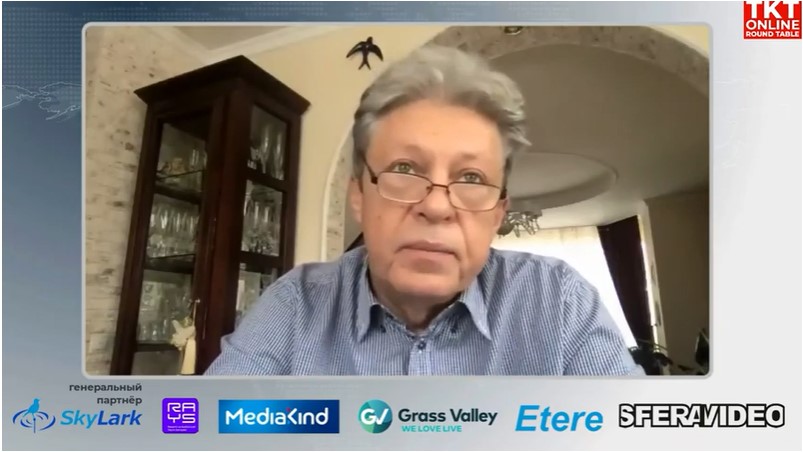
The argument of the officials goes thus; “since television works with cameras, let it give us a signal.” We’ve been fighting this for three years. And, nevertheless, they are forced to give four cameras to the judge on the table for the League. During the broadcast, if something happens, the judge asks our repeater to play this or that moment on the link. At this time, the operator of video replays, instead of collecting Summary/Highlights, that is, working to provide the television picture, is forced to deal with the judge in the analysis of judicial moments. As we can see, this is precisely the psychological dilemma.”
“In the game of volleyball, VAR has been introduced using separate cameras. We helped in the installation of this system. But at the launch, it turned out that the standard video replay system used in television is completely unsuitable for volleyball. The most important violations in volleyball – touching the net, double-touching the ball, or crossing the field line – cannot be tracked. On a normal video replay system that runs at 25 frames per second, we can only see an incomplete picture. In one frame, the ball is flying toward the line at full speed. And in the next frame, it has already flown over the net.”
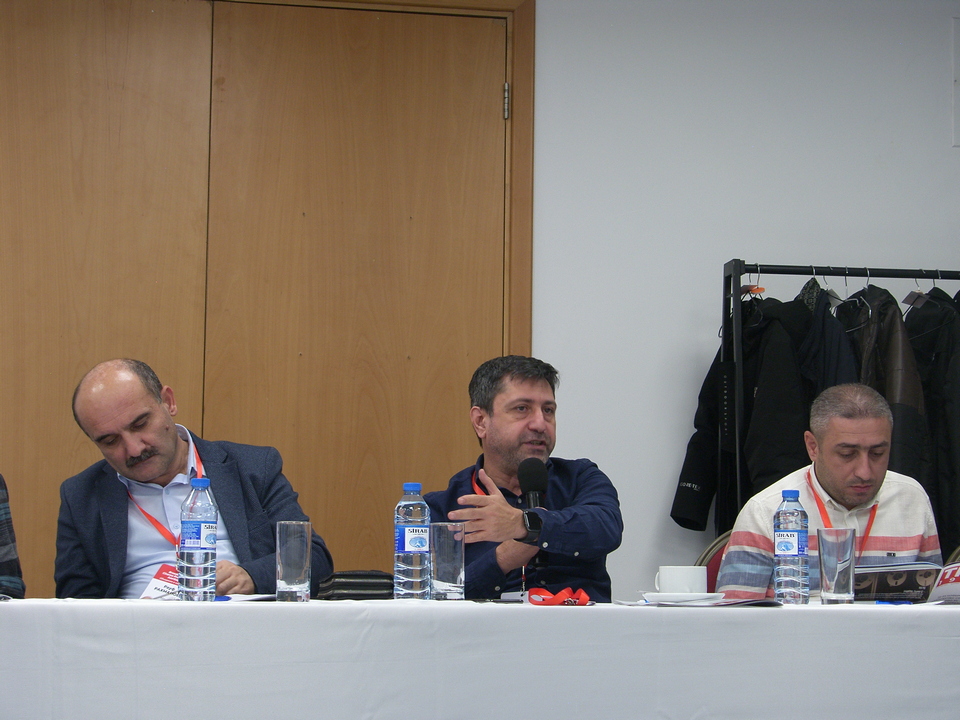
Therefore, the Volleyball Federation has developed its system. Acquired technical cameras, which are mainly used for product quality control. They give low-resolution pictures, some of them are black and white. But at the same time, they are high-speed, operating at 800 frames per second which make it possible to track the smallest violations.
The system is built in the same way in the European Volleyball Confederation (ECV) and the International Volleyball Federation (FIVB). As for the topic of Remote Production, we, together with Rostelecom, tried to build technologies in terms of economic efficiency. It is clear that getting just a video signal from cameras is half the battle. This does not solve the main economic problem which is sending the OB van and people to the broadcast site to receive camera control signals, sounds, etc.
“Frankly, today I do not yet see the cost-effectiveness of Remote Production for organizing one-day broadcasts or broadcasting any event in one day. In addition to financial costs, the assembly of this system requires a lot of time. It is more economically advantageous to send a completed PTS vehicle. But when the studio works daily in a remote location for one or two weeks, then it probably becomes effective. But I’m sure that sooner or later some kind of universal technological solution for Remote Production will definitely emerge!” Vladimir concludes.
Mohsen Rajabi, Business Development Director Sponix Tech (Qatar) in his statement at the international conference said, “First of all, I’m very glad that you invited me to this roundtable. It’s a pleasure to meet you all!

Remote production is a broad concept that includes our experience in sports over the past years. And I am willing to share our knowledge of how we developed a solution based on remote production in one small sector of this sport, and how we tried to commercialize a lot of technologies related to remote production.
First of all, I must say that remote production is not yet mature. In fact, many, many broadcasters and sports writers, including leagues, are not familiar with the concept of remote production, and there are some who are intimidated by the concept. They have a lot of faith in the hardware and infrastructure they can see in their venues in order to function appropriately and shape the game.
And so for companies, especially innovative ones like us, it is very important to convince these names and brands that remote production will really work, and will really replace the current and traditional production process. Remote Production has a lot of advantages, most especially its cost-effectiveness.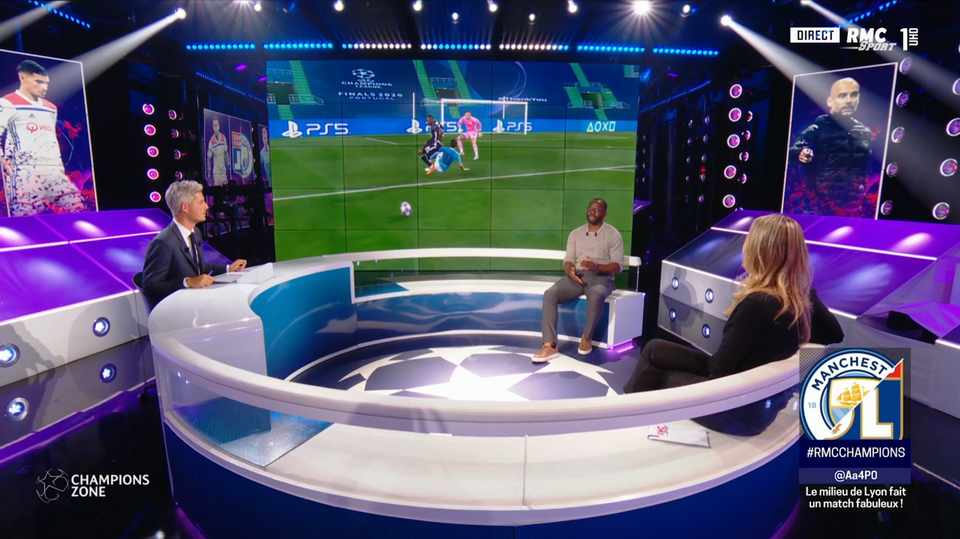
Remote Production technology is actually a few steps forward. Some of the decision-makers in our business support disruptive technology solutions. And we, in turn, are trying to be among the fewother companies that have created virtual ads and promoted aspects of the remote production process, from producing virtual ads in a game to creating content from any particular match, to getting data from each competition, and so on.
Now let me talk specifically about our experience in the market. Sponix is a company that was officially founded three years ago. Our main product is virtual advertising. This newly launched program is our own development and is called SPboard.
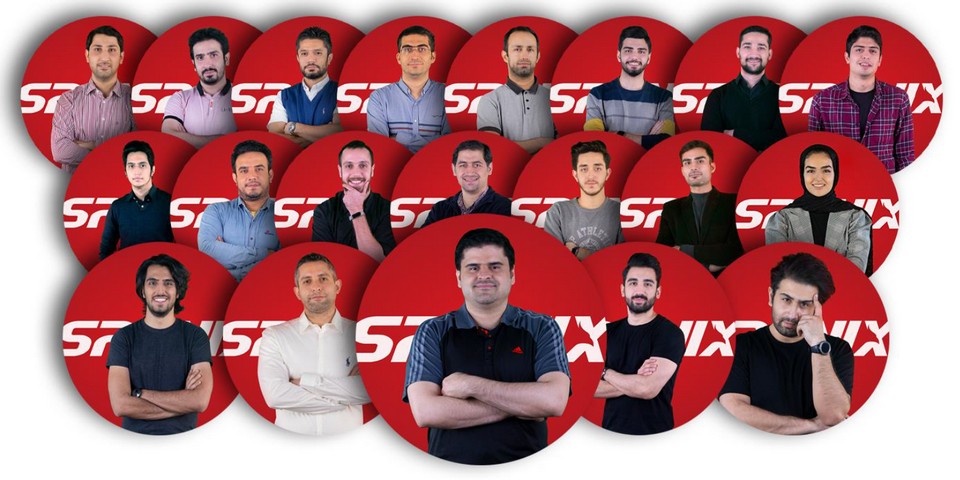
The peculiarity of virtual advertising lies in the creation and broadcasting of various advertising images at one point in time to different locations only using a program feed. Viewers in the Far East or Asia may see global and local brands, while viewers in South America see very different brands at the same time.
The product comes without installations, billboards, or any form of camera or production team integration, but we can receive programming streams and can send to manydifferent channels for different markets. This is a big game changer because most of our competitors need to set up and install billboards. Our other more advanced competitors do not need this setup and installation; however, they still need to have access to the main camera’s SDI feed format or some kind of involvement in the production process. Our uniqueness lies in the fact that we can work without interacting with the production site, without installing hardware cameras, billboards, and servers at each stadium to manage and produce such advertising virtually for differentregions.
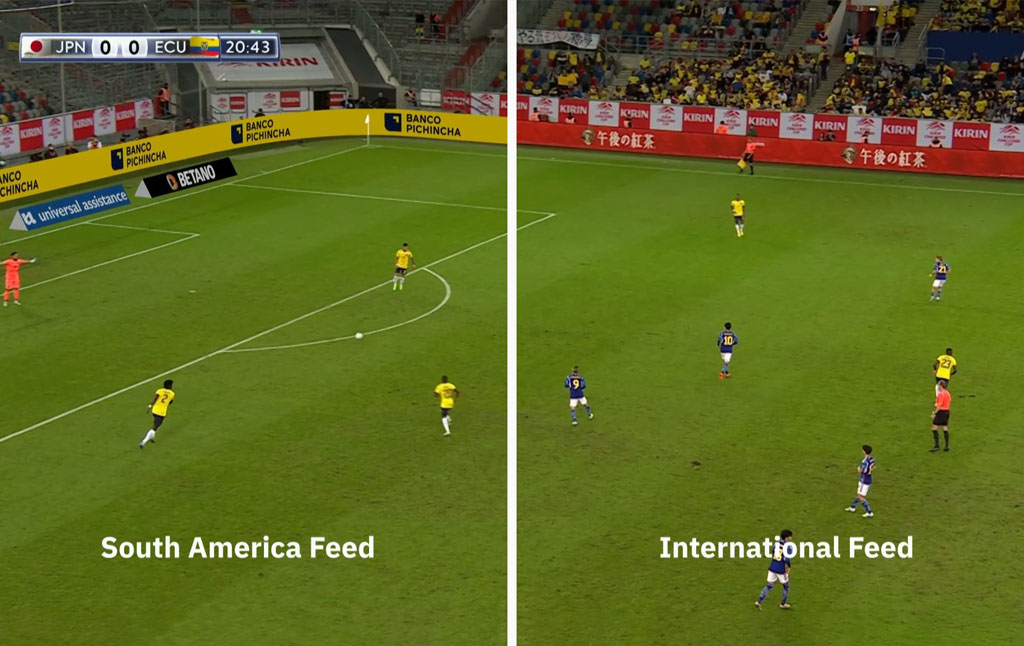
We have already implemented the technology in friendly matches before FIFA World Cup 2022.And right now our solutions are ready for football, basketball, tennis, table tennis, padel, handball, and ice hockey, and we are getting a lot of new approaches from new sports like cricket and baseball.
SPboard runs on cloud servers. In this way, we eliminate any need for equipment or cooperation with on-site production. Although the concept is quite innovative, we are in the process of expanding the market size. And we’re also doing our best to convince rights holders to set up screenings and run tests to prove that the feed they create in the stadium, billboards, and ads can be changed for different regions.
The technology itself is new, and there are some rough edges with the infrastructure, but the most important thing in this whole workflowis the bandwidth. Remote production is highly dependent on bandwidth and there are productioncompanies we work with to bring on Remote Production. As I mentioned earlier, bandwidth is the most important aspect of remote production, and more developed countries are adopting 5G in their sports venues, especially in their tournaments, which is very good for us.
So far, I would say that we are succeeding to some extent in targeting our markets, monetizing, and penetrating the market in the near future. Now that football season has approached, production teams that have switched to remote production will have more events.
Some African leagues as well as leagues in Asia are moving to remote production and we can only hope that the technology we are presenting will continue as a trend in the near future which may make broadcasters believe in us.
The concept of remote production is very similar to the concept of VAR in football, and we are leveling the playing field to become one. And we are full of hope. More recently, we have been contacted by those who want to work with remote and cloud-based server solutions, and we look forward to collaborating with others in the future.
Many thanks to everyone for your time and please let me know if you have any questions!”


